#azula sufi
Explore tagged Tumblr posts
Text
Severim Ben Seni - Turkish Song
youtube
For all he's interested to a piece of Sufism. And for @camcat1320 , of some verses of this Song could help for your Story, and not for One character. And a link to see how the Song was Completed by some breathing exercises (the pauses among the verses and After the refrain, they were all breathing exercises, and they were made with that head's movement in the video).
Link:
youtube
-Old Turkish Lyrics
Severim ben seni candan içeri (X2)
Yolum vardır bu erkandan içeri (X2)
Beni bende demem bende değilim (X2)
Bir ben vardır bende benden içeri (X2)
Nereye bakar isem dopdolusun (X2)
Seni nere koyam benden içeri (X2)
O bir dilber dürür yoktur nişanı (X2)
Nişan olur mu nişandan içeri (X2)
Beni sorma bana bende değilim (X2)
Suretim boş yürür dondan içeri (X2)
Beni benden alana ermez elim (X2)
Kim kadem basa sultandan içeri (X2)
Tecelliden nasip erdi kimine (X2)
Kiminin maksudu bundan içeri (X2)
Kime didar gününden şule değse (X2)
Onun şulesi var günden içeri (X2)
(not singed by Farya Faraji)
Senin aşkın beni benden alıptır (X2)
Ne şirin dert bu dermandan içeri (X2)
(not singed by Farya Faraji)
Şeriat tarikat yoldur varana (X2)
Hakikat meyvası andan içeri (X2)
(and It would be the refrain of the Song)
Dini terk edenin küfürdür işi (X2)
Ol ne küfürdür imandan içeri (X2)
Unuttum din diyanet kaldı benden (X2)
Bu ne mezhep dürür dinden içeri (X2)
Süleyman kuş dilin bilir dediler (X2)
Süleyman Süleyman'dan içeri (X2)
Geçer iken Yunus şeş oldu dosta (X2)
Kim kaldı kapıda andan içeri (X2)
-English Translation
I love you from the depths of my soul,
My path lies within these truths profound.
I do not call myself "me," for I am not "me";
There is a "self" within me, beyond "me."
Wherever I look, you fill it completely,
Where could I place you, for you're beyond me
That beauty is veiled, with no outward sign;
How can there be a sign beyond the unseen?
Do not ask of me, for I am not within;
My form walks hollow, stripped of its shell.
I cannot grasp the one who took me from myself;
Whose steps tread higher, beyond the sovereign's domain.
Some receive their share from divine manifestation,
While others seek what lies beyond even this.
Whoever catches a glimpse of the radiance of the vision,
Their glow surpasses even the light of the day
Your love has taken me from myself;
What a sweet pain, beyond any remedy. (Farya did not sing these parts)
The Sharia and the Path are roads for travelers, But Truth's fruit lies beyond even them. (Farya did not sing these parts)
To abandon faith is the act of disbelief,
Yet what disbelief surpasses even faith?
I have forgotten religion and ritual;
What path is this, beyond all creeds?
They said Solomon knew the language of birds, Yet Solomon lies beyond Solomon himself.
Passing through, Yunus found himself scattered in the beloved,
Who remains at the door, beyond that threshold.
#sufi wisdom#farya faraji#severim ben seni#yunus emre#sufi master#sufi#sufism#shaikh sufi#sufi islam#islamic#azula redemption#her theme in that case#atla#avatar the last airbender#atla azula#avatar the legend of aang#azula#princess azula#azula sufi#shah ismayl was king and sufi#safavid#rumi#jalal al din rumi#Youtube
2 notes
·
View notes
Text
ATTENTION:
This is just the personal view of the author, It isn't a Dogma or an Absolute Truth
The Muslim Fist. That was an other name of the style that authors used as reference for Azula's Fire Bending.
Probably, nobody of the authors and writers had known this origins. But It's interesting for me.
That's why, in my personal view, every Azula's Redemption Arc should be influenced by Muslim Sufism, and as Persian was Fire and Arabia was Earth for Firdouzi and other medieval Persian authors, and Persia had a debt with Arabia for the religion part of Iran's identity, Islam, at the same time Azula's development should happened in the Earth Kingdom, the Place under her dignity but the only Place when She can find a Place to rule (as in Azula's in the Spirit Temple), and a Place that had a part in the formation of Fire Nation (in the Old Lore, when the actual Fire Nation's inhabitants were descendents of Bhanti, a people migrated by Earth Continent). Ah, for @camcat1320 (please, hear when you have time) @akiizayoi4869 and @wingchunwaterbender : here's my two personal themes of this personal interpretation of an Azula's Redemption Arc.
Severim Ben Seni, written by Yunus Emre, a XIII Century Sufi and singed by Farya Faraji
https://youtu.be/5TvIIYWmbBY?si=ly_2VKMvaBbQxs6Y
Safawids, a composition of different poems written by Shah Ismayl, Shahanshah of Safawid Dinasty of Iran (and Great Conqueror by the Age of 14 years, just like Azula, but with some mystical exagerations like believe of being the Incarnation of Caliph 'Alī and Master of the Twelve Imams), singed by Farya Faraji.
https://youtu.be/Hu877fewFK4?si=h2A2nlfCL7c_nQAo
Ah, I would a Sufi experience for Zuko too. Because Sufi meditation exercises and dhikr are based on respiration exercises, as we can hear and see in the videos (especially in the beginning of the Safawids video).
Fighting Styles: Azula
Today I’m going to take an in-depth look at Azula’s fighting style, which, after much debate between myself and my Sihing and Sidi, has been identified as a mix of Northern Shaolin and Chaquan/Chachuan (查拳). I’m mainly going to focus on Chaquan/Chachuan, because Northern Shaolin refers to a ton of different styles, and thus is not as easily defined, and Chachuan is what makes Azula’s fighting style unique in comparison with other firebenders. So let’s get started, shall we?
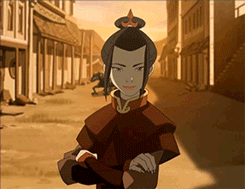
First, what exactly is Chaquan/Chachuan?
Chachuan (The Cha Family Fist) is a substyle of Changquan (長拳), a Northern style which literally translates into “The Long Fist”. Changquan is one of the most popular styles of kung fu in China, due to the “showiness” of its acrobatic forms, and is often performed at tournaments. While it does not technically fall under the category of “Northern Shaolin”, since it did not originate directly from Shaolin, Changquan contains many elements in common with Northern Shaolin styles, due to the constantly evolving nature of kung fu in China throughout history. It is said that the alleged creator of Changquan, Emperor Zhao Kuangyin, was greatly influenced by Shaolin styles, and the resulting prevalence of Changquan in turn greatly influenced the Northern Shaolin styles.
The four families of Changquan are: Cha (The Cha Family/Muslim Fist), Hua (The Hua Family/Flower Fist), Pao (The Cannon Fist), and Hong (The Red Fist). Azula specifically uses the Cha Fist (which itself is split into three different families of Zhang [faster, more agile, more compact], Li [more upright, more comfortable, more graceful], and Yang [more powerful, more continuous, and more direct], but due to the limitations of her fighting animations I cannot discern exactly which family style she uses).
The most notable contribution of Chachuan is the form known as Tantui, or the “Springing Legs” form. Many styles of kung fu, including Northern Shaolin, have incorporated Tantui (or some version of it) into their core curriculum. In fact, it is so ubiquitous, that the Chinese Government adapted the original Cha 10-Road Tantui System as the basis for the contemporary sport of wushu. Though the Tantui System has been adapted into the curriculum for many different styles, and nowadays can be considered a style of its own, the Cha Tantui remains unique due to its irregular, off-beat rhythm and angular strikes, as well as frequent angle changes, which are the defining characteristics of Chachuan.
Other notable characteristics include:
1. Balanced use of both hands and feet
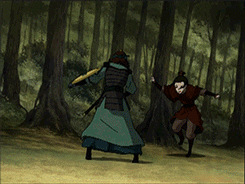
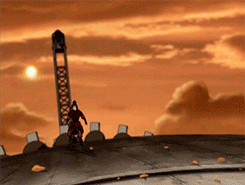
2. Heavy emphasis on a strong offense, as well as numerous counter-attacks, because Chachuan relies on a strong offense to provide defense…

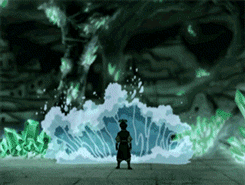
(…which coincides with Azula’s general style of fighting…)

3. Swift, forceful, and economical strikes, usually delivered at angles
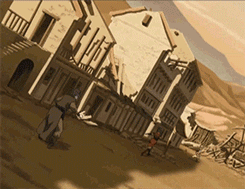


4. Wide extension of the limbs, to maximize the space between the body and the fist, keeping attackers at a safe distance


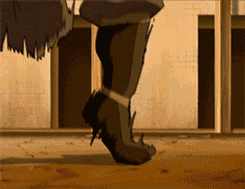
5. Arms outstretched and striking in two different directions, in order to increase the user’s awareness of their surroundings and their effectiveness versus multiple combatants
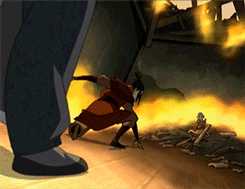
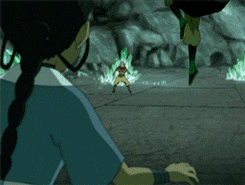
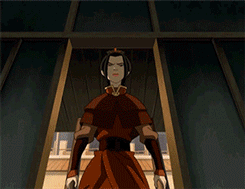
6. Sweeping blows, from both hands and feet (Azula is a big fan of the low sweeping kick in particular, which she performs at least 3 times during the series)


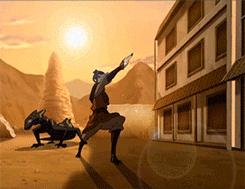

7. Impressive acrobatic kicks and leaps (The 10-Road Springing Legs Form provides the basis for this.)


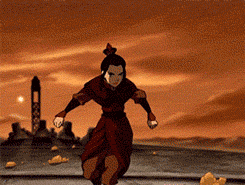

8. High degree of maneuverability, in contrast with more grounded forms like Tai Chi and Hung Gar
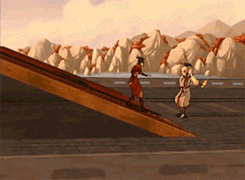

Chachuan is a style that is noted for its extreme beauty, elegance, and grace, as well as its acrobatic nature, versatility, and combat effectiveness. During the Tang Dynasty, it was the martial art of choice employed by soldiers in the Imperial Army due to its ability to fend off multiple opponents.

Unlike Northern Shaolin, where nearly every strike is delivered with a high degree of power, Chachuan’s forms and attack sequences are performed in continuous waves, with each movement leading into another, coalescing into a single (or multiple, depending on the situation) powerful strike(s) at the end.


Like any seasoned Chachuan user, Azula attacks in waves. She favors quick strikes that produce smaller bursts of flame, which usually culminate in one large burst at the end. The idea behind this is to chip away at your opponent’s weak spots with quick, soft blows, then finish them off with one or more hard blows at the end. The same applies to Azula, who likes to finish her fights with lightning generation (a Northern Shaolin form, but she performs it with the movement style of a Chachuan user).
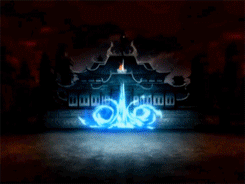

The odd rhythm of Chachuan lends to its general unpredictability, and, along with a number of “sneaky” moves, makes it one of several styles (such as Drunken or Monkey) that actively relies on deception to evade and quickly dispatch its opponents. Graceful, quick movements transition abruptly into powerful strikes, interspersed with steady stances and sudden stops. It has been said that Chachuan users are like candles blowing in the wind; dancing gracefully one second, but still and steadfast the next. Any time a Chachuan practitioner is standing still, you’d best be prepared to defend, dodge, or block yourself against a series of incoming attacks.


Because it is a physically demanding art form that requires a high level of flexibility, Chachuan users must begin training at a very young age, and most competitive performers of the art are quite youthful. It is also a popular style among young girls and women.
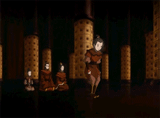
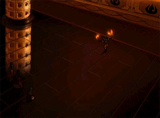

Chachuan is one of the few martial arts in the world which remains relatively unchanged over the course of time. It is a style that embodies contradiction and balance, and has been heralded as vigorous, yet precise, graceful and authoritative, elegant but forceful. In combat, skilled Chachuan practitioners must be extremely efficient, due to the high physical demand the acrobatic style places on its user. The prodigious skill required of a Chachuan practitioner, along with its renowned beauty and effectiveness, make it the style perfectly suited for Azula’s personality.
Random Notes:
The first form of Chachuan is called muzi (母子) or “Mother and Son”. The form Azula demonstrates as a child during “Zuko Alone” is very reminiscent of this form. Foreshadowing of her lingering resentment towards Ursa and Zuko, perhaps?
Interesting to note is that from Season 3 onwards, Azula begins wearing heavy armor. This would likely have impeded her ability to perform Chachuan to her full capacity, causing her to tire more quickly than normal.
Though Chachuan and Northern Shaolin have similar moves, the execution style overall is different. You can see the difference between the way Zuko bends and the way Azula bends. Zuko’s strikes tend to demonstrate a noticeable exertion of force and power (heavily external hard blows), whereas Azula’s strikes exert force abruptly and unexpectedly. Another noticeable difference is in the posture; while Zuko’s stances tend to be more upright, like most Northern Shaolin stances, while Azula’s stances more often include angles or leaning due to the elements of Chachuan in her style. (If you’re interested in seeing the differences in these two forms, watch a video of the Tantui form as performed by a Northern Shaolin practitioner and a Chachuan practitioner.)
Chachuan is called The Muslim Fist because it was allegedly founded by Cha Shang Mir, a Muslim General in the Chinese army, and was predominantly taught to and practiced by Muslims in ancient times. Nowadays, it is one of the more popular styles of Changquan taught in China, though it is still extremely popular among the Northern Islamic population.
The style of Chachuan is deeply rooted in Northern Chinese-Islamic philosophy and spirituality. Its key principle is the idea of achieving harmony and balance by embodying contrasting elements. When Azula is “off” in Sozin’s Comet (Zuko subtly noting her loss of sanity and inner balance), her fighting style suffers considerably.
And that’s the long summary of a short glimpse at Chachuan. If you want moves like Azula, go out and learn some Cha Fist!
#atla#avatar the last airbender#azula#atla azula#princess azula#islamic#sufism#sufi wisdom#sufi#shah ismayl#farya faraji#i love this guy#in my mind he is the physical appearance of an adult Sokka#well not so much#but i thought that when i was a child#avatar the legend of aang#azula redemption
5K notes
·
View notes
Note
I tried to appreciate LoK, to go beyond the stereotypical American 1920s aesthetic, to not even try to create a unique aesthetic suitable for that fascinating fusion of Asian, Amerindian and European cultures typical of that Universe, but... I couldn't. That is: the romantic relationships are unrealistic and poorly written (more than in original show, when they were realistic but written badly, cause the useless "shipping" where crack ships are possible like canon ships, and I admit of being part of the problem), and a lot of characters go from one transformation to another in an excessive and almost unnatural way, erasing any form of character development (like Korra who if If it had been well written I would have appreciated it), and this is when they have a character (Asami isn't a real character)! And those who say "this is how people act in reality, this is how love relationships work in real life"... if you are Americans, I inform you that half of your fellow citizens use psychotropic drugs. Clear proof that many people have problems.
I'll leave it up to you how to interpret my words about "acting real."
But in the end, one thing I hated the most, and I'm not just talking about LoK but also about comics, and this heck of post-apocalyptic sequels (in a period in which post-apocalyptic no longer attracts, but probably Di Martino thinks he is still in the 80s, when he was still a kid), is the continuation of a flaw that was also partly present in the original series: the reduction of the cultures and religions of Asia to Buddhism, the Chinese and Japanese Mahayana fused with Tibet's lamaism, with at most Shintoism fused with the American and Altaic of animistic visions .
But Asia is much larger and richer. Just speaking of peoples, there are the Turks such as Kazakhs and Uzbeks, or Iranian populations such as Tajiks, Pashtuns, Baluchis, and the Arab populations of Persia and India, the Mongolians, or the Austronesian populations of the Philippines, of the Indonesian islands, of Borneo, of Malaysia; and this obviously without mentioning Vietnamese, Khmer, and that universe of cultures of so-called India, from Indo-Aryans such as the Hindis to the Dravidian populations and pre-aryans like the Tamils.
And then the religions: between Mongolian and Turkish Tengrism, Mazdaism in India and China with its influences on Buddhism, Indian Jainism and the visions that precede Buddhism, Jainism and the like, which derive from the Hindu śramaṇa. Not to mention my two favorite religions in Asia, namely Islam and Syriac Christianity. The latter arrived in China as early as the 5th-6th century AD, forming the first communities called Hui and which flourished under the Tang Dynasty. And without talking about the Malabarian Churches in India, prior to the arrival of the European Jesuit missionaries. And let's not talk about Islam, with its Iranic, Turk, Indian and Chinese Sufi Confratenities, Chinese Islam is also very present in areas such as Martial Arts, in the case of Baijiquan, developed by a Muslim general (and which, if I'm not mistaken, partly influenced Firebending movements, particularly Azula's, creating my figure of a "Sufism-themed Azula's Redemption Arc" with the company of Haru as in some famous storyboards; especially since Islamic ascetics could continue to work, marry, and were often also warriors, as in the case of the "first Sufi", Abu Da'ur Al-Ghīfarī, who is among those dearest to God, together with those who pray after a hard journey and those who give alms without having interests, he put "who fights until Victory").
But no: we have a mediocre fake-buddhism with western sauce, and the stupid incoherence called Raava and Vaatu, a fusion among Mazdean Dualistic view and Chinese Yin and Yang. That's because Konietzko and Di Martino are agnostics or atheists, and probably they believed themselves to be "deep in their knowledge" and that "religions are for moron".
X
4 notes
·
View notes
Note
10, 18, 20 if you please
10. characters that deserved worse? >:]
the ending for ozai was poetic justice at its finest and i wouldn’t change anything for aang (I am firmly in the camp of ‘asking a twelve year old to murder someone is fucked up, let alone a twelve year old pacifist genocide survivor’) but ozai deserved to get stabbed once or twice. maybe more than twice. more like twelve hundred times. preferably iroh (or ursa) doing the stabbing. again, asking someone to kill their father... big ask, not sure i’d *want* to put that on zuko or azula even though they have the full right to stab him. (but if they want, zuko and azula can stab ozai a little. as a treat.)
also i feel like iroh and ursa, speak of the devils, deserved to be put through the wringer more for their actions respectively, they’re far more morally grey than their canonical outcomes / character arcs suggest, and have things to atone for.
18. characters you want to wrap in a blanket and tell them they’re going to be okay?
oh like all of the gaang at various points?? they all need that, i think. azula as well. and mai and ty lee. basically every child in the show deserves this? where are their parents? there are so many absent/missing parents in the show and it’s heart-breaking (but makes sense given the context).
20. name a song that reminds you heavily of a specific fandom or character.
My Exit, Unfair - mewithoutYou
youtube
This is one of my favourite 00s post-hardcore/emo songs. This song is quite biblical (but everything mewithoutYou makes is religious on some level) but I think this could apply equally to Zuko during his banishment period/season one as much as it could apply to Azula in a post-finale situation where she’s broken out of the palace and has ran off on an Azula Alone solo adventure, and is still licking her wounds about all that has happened.
My exit, unobserved and my homesickness, absurd,
^ the first (and most key) line I think applies more to Azula, in a scenario where she’s snuck out of the palace, (and homesickness would be abusrd because it’s Zuko’s palace now, she lost, he won, why would she want that?) but there’s a certain righteous indignation in the refrain ‘my exit, unfair and unobserved’ which can apply to both. Certainly ‘my exit, unfair’ is very Zuko.
I said "Water," expecting the word would satisfy my thirst. Talking all about the second and third, When I haven't understood the first.
^ this is very S1 Zuko, that obstinate impatience is very him, and racing ahead to things that he can’t yet grasp yet while still struggling with the basics? Zuko.
Jonah, where's that boat going-- Your ship set with eager sails? There's a swirling storm soon blowing, And no use, fishermen, in rowing from the consecrated whale! Just like the clouds, they bring a darkness and a hard rain's gonna fall, I felt the crowds bring a loneliness and a hard rain's gonna fall.
All the rain and storm references, while a clear reference to the biblical story of Jonah (I’m not good with my bible idk how far this would apply), also are a clear reminder, for me, of Zuko travelling for years out at sea. Two of Zuko’s most dramatic and conflicted moments happen during a storm – the first of which flashbacks to the event of Zuko’s exit, like, it’s just too fitting honestly?
She always weighed me down, But afraid I might need her, I dragged her around. It's best to keep close sackcloth and ash in a whitewashed town. She wore that phony smile on her face, I guess like a bandage on a wounded place, While I kept the keys to every old lock just in case.
^ ‘She’ here is Ursa, or the memory of her. This obviously works more for Azula (though I could also see Zuko maybe expressing some of this as an adult after he has worked through his idealisation for his mother and realised he’s far more conflicted about her leaving than he imagined). “afraid I might need her, I dragged her around” reminds me specifically of how Azula interacts with the memory of Ursa during the mirror scene in Sozin’s comet.
Oh, the clouds they brought a darkness and a hard rain's gonna fall, And all my laughter ends in emptiness and a hard rain's gonna fall, My every medicine causes more illness and a hard rain's gonna fall.
These lines are just emo as shit if I’m honest and reminds me of Zuko’s “everything bad happens to me, I have the worst luck” etc. mindset if I’m honest. But honestly, I could see Azula, “I’m a monster” expressing this at her lowest point, the idea that she only brings ruin hits in these lines too.
But now I spend my days in ever-increasingly complicated ways Convincing myself of the rightness of each word I say
^ could apply to either of them, stubbornly in denial about the wrong direction of their path, having a more and more difficult time justfying themselves and their actions when it just becomes more evident (through travelling and seeing how their actions have affected the world) that they were in the wrong.
The final lines of this, interestingly, are a common islamic prayer. Interestingly, this song is about the singer’s mother (which makes the fact that ‘she’ could be Ursa just more apt honestly), who is a Sufi Muslim, I believe, and this prayer was commonly recited by her to the singer? Anyway the fact that the song ends with both a desperate prayer and a memory of their mother is very poignant I think.
4 notes
·
View notes
Text
Mmmh, a Sufi journey like Ibrahim ibn Adham.
I know that I'm ripetitive about a Sufi Azula, but please, tell me that the story of Ibrahim ibn Adham, a Prince of Balkh of 8th Century, isn't Perfect for a character like Azula!
Take the Lines by Daily Sabah (link in the end):
In the story, Adham was in his palace, a line of slaves waiting in front of him when an unusual man came through the door so boldly that no one had the courage to ask him to stop. Ibrahim asked him about what he wanted, to which he replied: "I am stopping over at this inn.” Ibrahim objected saying that it was not an inn, it was his palace. Then the man questioned him about the lineage of the owners of the palace which attested that it was actually an inn where people had come and gone. Ibrahim understood he was just another visitor in this inn, coming for a short period and leaving it, eventually. This was the first spark in his heart that would never stop growing.
And when tasted once, the thirst for the quest becomes unquenchable. To distract himself from this feeling burning him inside out, Ibrahim wanted to go on a hunting trip. This is where he heard the wake-up call: "Wake up before they wake you up!” As he pretended not to hear, that voice repeated his message again and again. Bow in his hand, he was after a gazelle when the coup de grace to his resisting self came: "By God, you were not created for this and you were not commanded to do this!”
This was the final warning that made him drop his guard; he dismounted from his horse, took the woolen shirt of a shepherd he met, gave him his gold-brocade robe, all his belongings and horse, and began wandering in the desert. He had finally woken up.
He was woken up to the fact that the things he owned did not belong to him and like the rest of all people, he was just another traveler in this world. So began his real journey where he lived according to his reality. The words of Ibn Arabi, known as the greatest master in Sufism on the temporary nature of this world, summarize it all: "The world is a bridge to be passed over, you don’t build houses on it.” Human beings come from nothingness in the sense that their own existence depends on the mercy of God and can have no authority either on this world or on their lives.

A miniature of 18th Century.
(link: https://www.dailysabah.com/arts/wake-up-call-awakening-soul-in-story-of-ibrahim-ibn-adham/news/amp )
Frankly, It would be acceptable, just without the elements about God and the Angels, cause in that world wouldn't make sense.
But a Journey Alone, when She understands her problems and accepts herself, with some casual meeting, It would be Perfect!
But not a Long journey, Just One or Two Years, before coming in a Place when She could begin her Legacy, at 18-19 Years. In my view, that Place should be in the Earth Kingdom, as a simbolico Place, cause Earth is stability and there you can build. And It's a Reference to Persian Culture, when Arabs and Islam are representives of Earth Elementi, while Persians and mazdeism are representives of Fire (or that said Firdousi).
So, It could be interesting! Ehi @nargg1 , I'm writing two fictions, but One is an AU, when Azula is a Single Mother at the end of Book 3 (there are References to Sufism, but It's very Long, and there are the other characters and the protagonists), the other sets in Omashu and Si Wong Desert, and It could be a possible sequel, when Azula finally takes her crown and new Kingdom, but there could be some references of her journey to Omashu.
What do you think?
Azula Redemption arc need to be A lonely journey
She need to travel the four nations,and learn more about life and history
Azula need someone to Guides her but instead of an iroh, she can gain diffrent wisdoms from diffrent people around the world instead of just one person yapping around
Maybe you will say azula was always alone why you wants her to continue alone?
Because of diffrent reasons
Not everyone has the luck to have people on their side and in the end the only person that can actually help you... Is YOU!
i think this a good lesson because azula deep down wanted her family to save her ( and ofcaurse she is right to feel this way)
The second reason is azula afraid of being alone and she need to face her fear
If zuko is the better virson of ozai, then azula is the better version of iroh
Azula is a child soldier in a world with no wars, they don't want her anymore , she has been discared the second the war ended
Azula dosen't know anything other than being a child soldier, So she need to learn how to be more than a soldier of her nation, a weapon of her father and a monster of her mother or even the crazy of zuko and iroh
And After she learn all of this she need to learn how to be anti Imperialism
I wouldn't put any romance, because alot of writers fell on the idea of making her redeem herself for the person she love
But no azula should redeem herself for azula herself not for a company or a nation or anyone els! ( yes armstrong refrence)
Azula should be away from her family, far away, Especially they are not intersted in redeeming her or even treating as a human who have dreams
Zuko will probably thinks azula wants to take him down and will keep her under the watch all day long and try to keep her under his control
Ursa will probably yapping about how she is sorry and try to talk
No seriously, do you think talking things out can heal anything?, and ursa would want from azula to set and do nothing while zuko having all the praize
Can azula have a relationship with her family?
Yes she can but it's actually isn't something she should do from her side
But it's something ursa and zuko should do and work for from their side, they need to change, if they wants a relationship with her they need to work for it, very hard
But from my point of veiw, i really can't see any Scenarios when they have a relationship
And even if they have it's won't be that strong and will be better if they have distance between each other
ofcaurse After all of this azula need to make freinds, finds her destiny, making her dreams and desires come true etc
Also i want azula to have her animal companian throughout her travels 👉👈
I wouldn't say this a fanfic, but that what i really wants in the main story
#atla#avatar the last airbender#azula#avatar the legend of aang#atla azula#princess azula#atla fanfic#sufism#sufi#sufi master#sufi mystic#ibrahim ibn adham#azula redemption
119 notes
·
View notes
Text
Ehhh, that happened cause Di Martino and Bryke wanted a thing, while some of the other writers wanted a different thing.
And they understood that It couldn't be enough, and not Just for Azula but for all the characters. But they wanted their characters to remain how they are.
And this proves to everyone that they're mediocre writers, and they should never direct or write a show or a movie, not without a chief under their necks.
Ok, I can see that my views of a Sufi Azula and Zuko (or a Raban Zuko) are better than Original Ending. Lazy Di Martino and Konietzko!



@cobra-diamond had this very interesting take on what writers intended the narrative end of Azula's arc to be and I thought it was worthy of its own post.
41 notes
·
View notes
Note
https://youtu.be/5TvIIYWmbBY?si=p1jI2SDaRj8jcdCB
Well, I have a Song about this Spiritual Journey, Severim Ben Seni (that One in the link, here's sung by Farya Faraji).
Because, in my mind, I think that the spirituality more near to Azula's characterization is Islamic Mysticism, the Sufism, cause Sufis can be married, have properties, and they can be Fighter or Ruler.
An example is the first Safavid Shah Ismayl, who begun his empire when he was a 14 years old boy. And this Song inspired by some of his Poems (especially the refrain of the Song, Who was written by Ismayl precisely at 14 years), would be Perfect for the end of an Azula's Spiritual Journey.
https://youtu.be/Hu877fewFK4?si=AUKnF5QWw3xKxpE8
Yes, I have in Mind a Dervish Azula (and Dervishes Zuko and Mai, even I would prefer a spirituality more near to Syriac Christianity for Zuzu, I don't know why, maybe because Syriac Christianity was present in Tang Dinasty). I'm a bit strange. Maybe It's the reason behind my fanfiction.
Your thoughts on azula having a Spiritual Journey, how can it be done?
Will it be a good thing for azula?
I'm not against the idea and I think it would be a good thing for Azula if it's done in an interesting way.
Personally, I can see it being closely related to firebending in some way, for example, the idea of Azula becoming a Sun Warrior and eventually growing into a wise, powerful firebending master that many people look to for teachings and advice. I'd want her to keep a great part of her usual sarcastic self, but at the same time, she would channel her abilities in a positive direction.
Also, if we're talking about Azula getting past her traumas and becoming a more spiritual person, I'd like to see her opening the 7 chakras the way Aang did with Guru Pathick, even if she's not an avatar, just because I think it'd be an incredibly interesting healing process for Azula and I'd want to see her going through this.

ART BY AN AMAZING @adajel
#atla#azula#answering asks#spiritual journey#sufism#islamic spirituality#shah ismayl#safavid#yunus emre#dervishes
18 notes
·
View notes
Text
Sufi Azula will be my way. Ben Seni Severim will be the Fire Siblings anthem!
And Azula will be like the people who fought in Karbala against Husayn, and then they understood their sins, choosing Revenge for the Killed.

With my last exams and my original comics.
All I have to say is this: fanfiction exists for a reason
109 notes
·
View notes
Text
It's actually really intersteing and i can see the Similarity of the story of these two and how i want azula stroy to be
I don't know much and the sufi are they part of muslims? ، or it's it own religion?
Also arabain azula 🙂↕️✋
But yes i'm intersted in it
Also i want link for your fanfictions, azula as a mother and a queen is really something i'm intersted in
Azula Redemption arc need to be A lonely journey
She need to travel the four nations,and learn more about life and history
Azula need someone to Guides her but instead of an iroh, she can gain diffrent wisdoms from diffrent people around the world instead of just one person yapping around
Maybe you will say azula was always alone why you wants her to continue alone?
Because of diffrent reasons
Not everyone has the luck to have people on their side and in the end the only person that can actually help you... Is YOU!
i think this a good lesson because azula deep down wanted her family to save her ( and ofcaurse she is right to feel this way)
The second reason is azula afraid of being alone and she need to face her fear
If zuko is the better virson of ozai, then azula is the better version of iroh
Azula is a child soldier in a world with no wars, they don't want her anymore , she has been discared the second the war ended
Azula dosen't know anything other than being a child soldier, So she need to learn how to be more than a soldier of her nation, a weapon of her father and a monster of her mother or even the crazy of zuko and iroh
And After she learn all of this she need to learn how to be anti Imperialism
I wouldn't put any romance, because alot of writers fell on the idea of making her redeem herself for the person she love
But no azula should redeem herself for azula herself not for a company or a nation or anyone els! ( yes armstrong refrence)
Azula should be away from her family, far away, Especially they are not intersted in redeeming her or even treating as a human who have dreams
Zuko will probably thinks azula wants to take him down and will keep her under the watch all day long and try to keep her under his control
Ursa will probably yapping about how she is sorry and try to talk
No seriously, do you think talking things out can heal anything?, and ursa would want from azula to set and do nothing while zuko having all the praize
Can azula have a relationship with her family?
Yes she can but it's actually isn't something she should do from her side
But it's something ursa and zuko should do and work for from their side, they need to change, if they wants a relationship with her they need to work for it, very hard
But from my point of veiw, i really can't see any Scenarios when they have a relationship
And even if they have it's won't be that strong and will be better if they have distance between each other
ofcaurse After all of this azula need to make freinds, finds her destiny, making her dreams and desires come true etc
Also i want azula to have her animal companian throughout her travels 👉👈
I wouldn't say this a fanfic, but that what i really wants in the main story
119 notes
·
View notes
Note
Man, I'm Sorry for my horrible mistakes. Sadly, I had written with the mobile phone. And yes, I'm using a mobile phone for Tumblr. Right now.
But I'm not Sorry for the thinking behind my words. My "Azula's Redemption Sufi Arc" is my favourite dream. And yes, After Jetzula, the loser cousin of Zutara, I like Harula. That sounds strange cause It is, but It was presented in an official storyboard in a Comicon. Probably It was a joke, but I like that. And I like Haru too (Not like Piandao, Jet, Aang, Sokka and Hakoda, but I appreciated him. But more than Katara. I don't like Katara. And Suki. And Zuko. I habe some problems with the most famous good characters, but I don't hate them, I swear).
I'm a very strange guy.
I tried to appreciate LoK, to go beyond the stereotypical American 1920s aesthetic, to not even try to create a unique aesthetic suitable for that fascinating fusion of Asian, Amerindian and European cultures typical of that Universe, but... I couldn't. That is: the romantic relationships are unrealistic and poorly written (more than in original show, when they were realistic but written badly, cause the useless "shipping" where crack ships are possible like canon ships, and I admit of being part of the problem), and a lot of characters go from one transformation to another in an excessive and almost unnatural way, erasing any form of character development (like Korra who if If it had been well written I would have appreciated it), and this is when they have a character (Asami isn't a real character)! And those who say "this is how people act in reality, this is how love relationships work in real life"... if you are Americans, I inform you that half of your fellow citizens use psychotropic drugs. Clear proof that many people have problems.
I'll leave it up to you how to interpret my words about "acting real."
But in the end, one thing I hated the most, and I'm not just talking about LoK but also about comics, and this heck of post-apocalyptic sequels (in a period in which post-apocalyptic no longer attracts, but probably Di Martino thinks he is still in the 80s, when he was still a kid), is the continuation of a flaw that was also partly present in the original series: the reduction of the cultures and religions of Asia to Buddhism, the Chinese and Japanese Mahayana fused with Tibet's lamaism, with at most Shintoism fused with the American and Altaic of animistic visions .
But Asia is much larger and richer. Just speaking of peoples, there are the Turks such as Kazakhs and Uzbeks, or Iranian populations such as Tajiks, Pashtuns, Baluchis, and the Arab populations of Persia and India, the Mongolians, or the Austronesian populations of the Philippines, of the Indonesian islands, of Borneo, of Malaysia; and this obviously without mentioning Vietnamese, Khmer, and that universe of cultures of so-called India, from Indo-Aryans such as the Hindis to the Dravidian populations and pre-aryans like the Tamils.
And then the religions: between Mongolian and Turkish Tengrism, Mazdaism in India and China with its influences on Buddhism, Indian Jainism and the visions that precede Buddhism, Jainism and the like, which derive from the Hindu śramaṇa. Not to mention my two favorite religions in Asia, namely Islam and Syriac Christianity. The latter arrived in China as early as the 5th-6th century AD, forming the first communities called Hui and which flourished under the Tang Dynasty. And without talking about the Malabarian Churches in India, prior to the arrival of the European Jesuit missionaries. And let's not talk about Islam, with its Iranic, Turk, Indian and Chinese Sufi Confratenities, Chinese Islam is also very present in areas such as Martial Arts, in the case of Baijiquan, developed by a Muslim general (and which, if I'm not mistaken, partly influenced Firebending movements, particularly Azula's, creating my figure of a "Sufism-themed Azula's Redemption Arc" with the company of Haru as in some famous storyboards; especially since Islamic ascetics could continue to work, marry, and were often also warriors, as in the case of the "first Sufi", Abu Da'ur Al-Ghīfarī, who is among those dearest to God, together with those who pray after a hard journey and those who give alms without having interests, he put "who fights until Victory").
But no: we have a mediocre fake-buddhism with western sauce, and the stupid incoherence called Raava and Vaatu, a fusion among Mazdean Dualistic view and Chinese Yin and Yang. That's because Konietzko and Di Martino are agnostics or atheists, and probably they believed themselves to be "deep in their knowledge" and that "religions are for moron".
X
#anti bryke#bryke critical#atla confessions#lok#lok confessions#i'm strange#harula#jetzula#cause I say it
4 notes
·
View notes
Text
Well, Sufism is just One of the way to live Islam, like the 'ulūm. Technically, the arabic name would be, if I Remember Well and you can correct me, tasawwuf.
A lot of Muslim Ulamā, Fuquha and Saints were Sufis, from the first of them, Abu Da'ur Al-Ghifarī, One of the Sahaba, or Hasan Al-Basrī, of the First Century of the Hijra, and other members of Sahaba and from the same Family of Muhammad, like the most notorious 'Alī Ibn Abu Tālib.
Some Sufis were Orthodoxes for the ulamā of all the madhāhib (Ibn Hanbal incluse), like Jalal Ad-Dīn Al-Rumi and Al-Junayd (this was a studenti of Ibn Hanbal), other were not Orthodoxes for Sunni Muslims but for Alids and Shi'a Muslims yes (two examples of those were Al-Hallaj and Suhrawardī), while other were heretics for kharijites too.
Sadly, I'm working with One of that, but I don't upload It./, because I made Just three chapters. But I finished a One-Shot/Pilot about One of those two fanfics of mine. But I'm correcting that, with the help of @camcat1320 (for grammar and coherence of the plot). So, maybe you will read it.
Ah, for Zuko would be a Spiritual Arc inspired by Syriac Christianity (Siro-Malabarian and Maronite), because Syriac Christianity was present in China in the Vth Century and was a bit strong under Yang Dinasty, and without speaking about Malabarian Christianity in China.
And yes, I wanted more references to other Asian Cultures, like Hindis, Tamil, Iranics, Turkics and Semitics like Arabs and Syriacs.
And Huis too (Muslim Chineses, yes, but some of them were and are Syriac Christians).
But how I will finish it? I have a map and a plot, so I'm writing It, but man It's hard!
And yes, Arab Azula and Syriac Zuko with Iranic elements for both (like Eastern Ancient Syria, Mesopotamia, Asūristan or Iraq).
Azula Redemption arc need to be A lonely journey
She need to travel the four nations,and learn more about life and history
Azula need someone to Guides her but instead of an iroh, she can gain diffrent wisdoms from diffrent people around the world instead of just one person yapping around
Maybe you will say azula was always alone why you wants her to continue alone?
Because of diffrent reasons
Not everyone has the luck to have people on their side and in the end the only person that can actually help you... Is YOU!
i think this a good lesson because azula deep down wanted her family to save her ( and ofcaurse she is right to feel this way)
The second reason is azula afraid of being alone and she need to face her fear
If zuko is the better virson of ozai, then azula is the better version of iroh
Azula is a child soldier in a world with no wars, they don't want her anymore , she has been discared the second the war ended
Azula dosen't know anything other than being a child soldier, So she need to learn how to be more than a soldier of her nation, a weapon of her father and a monster of her mother or even the crazy of zuko and iroh
And After she learn all of this she need to learn how to be anti Imperialism
I wouldn't put any romance, because alot of writers fell on the idea of making her redeem herself for the person she love
But no azula should redeem herself for azula herself not for a company or a nation or anyone els! ( yes armstrong refrence)
Azula should be away from her family, far away, Especially they are not intersted in redeeming her or even treating as a human who have dreams
Zuko will probably thinks azula wants to take him down and will keep her under the watch all day long and try to keep her under his control
Ursa will probably yapping about how she is sorry and try to talk
No seriously, do you think talking things out can heal anything?, and ursa would want from azula to set and do nothing while zuko having all the praize
Can azula have a relationship with her family?
Yes she can but it's actually isn't something she should do from her side
But it's something ursa and zuko should do and work for from their side, they need to change, if they wants a relationship with her they need to work for it, very hard
But from my point of veiw, i really can't see any Scenarios when they have a relationship
And even if they have it's won't be that strong and will be better if they have distance between each other
ofcaurse After all of this azula need to make freinds, finds her destiny, making her dreams and desires come true etc
Also i want azula to have her animal companian throughout her travels 👉👈
I wouldn't say this a fanfic, but that what i really wants in the main story
119 notes
·
View notes
Text
Thanks for explaining what sufi mean
I hope you tell me when you post your fanfic because i'm really intersted
And actually talking from others culture in atla fanfictions because atla it self take from others cultures
Also when we talk about arabain azula i imagined her wearing a hijab and covers her hair from the sand of Si wong Desert🤣
, also its seems zuko will be in your story, i wonder how big his role is
Azula Redemption arc need to be A lonely journey
She need to travel the four nations,and learn more about life and history
Azula need someone to Guides her but instead of an iroh, she can gain diffrent wisdoms from diffrent people around the world instead of just one person yapping around
Maybe you will say azula was always alone why you wants her to continue alone?
Because of diffrent reasons
Not everyone has the luck to have people on their side and in the end the only person that can actually help you... Is YOU!
i think this a good lesson because azula deep down wanted her family to save her ( and ofcaurse she is right to feel this way)
The second reason is azula afraid of being alone and she need to face her fear
If zuko is the better virson of ozai, then azula is the better version of iroh
Azula is a child soldier in a world with no wars, they don't want her anymore , she has been discared the second the war ended
Azula dosen't know anything other than being a child soldier, So she need to learn how to be more than a soldier of her nation, a weapon of her father and a monster of her mother or even the crazy of zuko and iroh
And After she learn all of this she need to learn how to be anti Imperialism
I wouldn't put any romance, because alot of writers fell on the idea of making her redeem herself for the person she love
But no azula should redeem herself for azula herself not for a company or a nation or anyone els! ( yes armstrong refrence)
Azula should be away from her family, far away, Especially they are not intersted in redeeming her or even treating as a human who have dreams
Zuko will probably thinks azula wants to take him down and will keep her under the watch all day long and try to keep her under his control
Ursa will probably yapping about how she is sorry and try to talk
No seriously, do you think talking things out can heal anything?, and ursa would want from azula to set and do nothing while zuko having all the praize
Can azula have a relationship with her family?
Yes she can but it's actually isn't something she should do from her side
But it's something ursa and zuko should do and work for from their side, they need to change, if they wants a relationship with her they need to work for it, very hard
But from my point of veiw, i really can't see any Scenarios when they have a relationship
And even if they have it's won't be that strong and will be better if they have distance between each other
ofcaurse After all of this azula need to make freinds, finds her destiny, making her dreams and desires come true etc
Also i want azula to have her animal companian throughout her travels 👉👈
I wouldn't say this a fanfic, but that what i really wants in the main story
119 notes
·
View notes